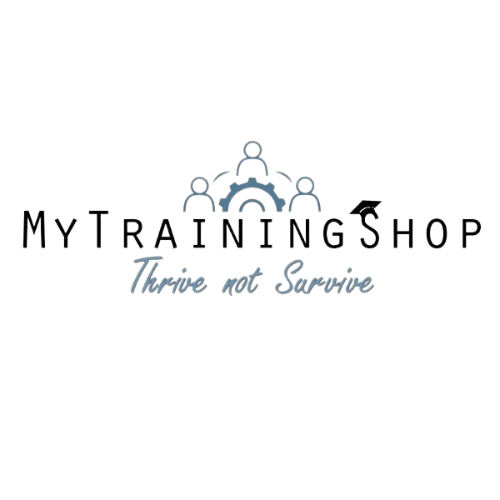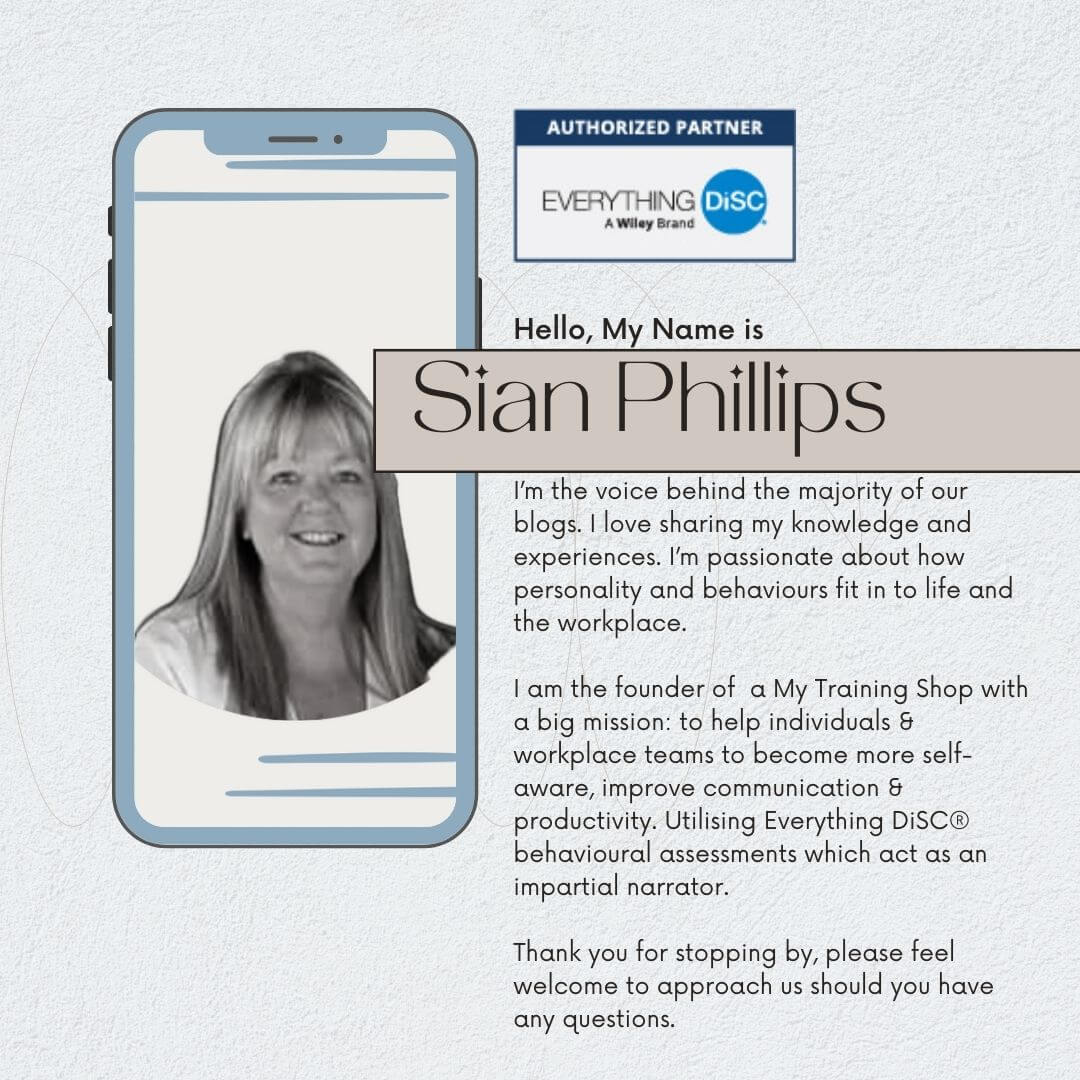Classroom vs E-learning: Which Type of Work Related Learning is Best for Me?
You’re probably reading this blog because you’re thinking about, or ready to embark on, a new post-school educational journey. Maybe the global changes, following what was a time for evaluating ourselves during 2020 and 2021 has rejuvenated your desire to learn more about the world we live in, Or perhaps you need to develop additional skills for your workplace to survive. Either way, thanks for reading.

Benefits of Training and Development
The coronavirus pandemic gave the whole world a new context and allowed almost everyone to assess how they live, work and play. Organisations are not be immune from those changes, in fact, many employers will be placing an emphasis on employees being able to work in an 'agile' way, in turn bringing about the need for all of us to learn new skills.
How to Take the Headache out of the Best Way to Learn

As Walter S. Young’s old adage goes “Every day is a school day”. With a multitude of different websites, tutors and companies advertising their own learning content as ‘the best’ or ‘most effective’ with the ‘highest success rates’, it can be hard to see through the educational fog to find the right course for you. But don’t give up.

Learning Styles
Before you decide who you are going to align your learning loyalties with, you need to decide which type of learning is best for you.
Everyone has their own learning style, or a mix of styles, which takes into account your personality, your family, work or living situation, and what you want to get out of your chosen course.
Depending on who you listen to, there are up to 7 styles (debate ongoing) that we use when learning something new. That said, not surprisingly there are around 71 different models, almost all of them doing it slightly differently, but often all boil down to the same basic theory. We all learn differently, at varying rates and engage with topics differently to achieve the same thing. Just as how we’ve all coped with lockdown in our own way, people absorb information in their own style, so learning has to accommodate that.
We won’t necessarily have a dominant style, but rather we swap and change them depending on circumstances, need, topic, location, etc. They include things like visual (a.k.a. spatial) for those who prefer using picture and images; ‘verbal’ (a.k.a. linguistic) for when you prefer using words, or even ‘social' when you prefer to work in a group setting.

Traditional Learning vs Blended Learning
Whether you are looking to start your learning for a personal or professional reason, there are a few different routes you can go down. The main two categories are ‘e-learning’ and the more traditional ‘classroom’ learning. There has also been a surge of so-called ‘blended’ learning techniques, a mix of the first those two formats combined, more popular in recent years and certainly more so since the pandemic hit.
Blended learning is often seen as the ‘best of both worlds’ approach. It’s designed to mix the more traditional classroom environment that people still associate with learning, and by embracing the advances of technology to offer the opportunity to engage and interact with content online. Blended learning offers great flexibility to those opting for that technique. This applies to both trainer and learner. As the participant engages more, the teachers are empowered to see their particular learning technique in action, which offers them greater insight to each participant so they can adapt their learning more dynamically.
In this fast-moving, tech-centric world that we live in, you might just assume that e-learning is the best way to go…but that is not always the case.
This article will hopefully help you to decide which type of learning is going to be best for you, giving an insight into the pros and cons of each of the main types.

Classroom Learning

Now, before you start getting horrible flashbacks to your high school math classes, adult professional learning environments are a lot different to where you spent your teenage years. There is a more mature and respectful atmosphere, and there are still some major pros to physically attending a course.
Traditional Learning Advantages
Pros:
- The Social Aspect - I know we just talked about adult learning as being a different environment to school, but the social aspects of any type of learning can be integral to its success. If you like meeting new people and networking with like-minded professionals, then classroom learning seems like the best option for you. Somehow, e-networking just doesn't live up to the same standards as face-to-face interactions.
- Instant Problem Solving – If you don’t understand something, you need it explained in a different way, or if you have a follow-up question, in a classroom you can ask the tutor and get an answer immediately. It’s a lot easier than having to wait 2 to 3 business days for an email reply – problem solved there and then.
- Tailored Learning – While technology can help you build a virtual profile, it is still entirely impersonal. A tutor in a classroom can help to adjust the course when possible to the students’ needs or learning styles. For example, if a student is struggling in a particular area, or if the materials are not appealing to their specific learning needs, a tutor can spot this without even being told and will be able to adjust accordingly.
- Can Cater to Different Learning Types – As we’ve touched on earlier and whilst up for debate it has been believed for a long time that we all have different learning styles. Most people rely on the three main types: auditory, visual and kinaesthetic. When using e-learning platforms, the materials and course content tends to rely very heavily on just ‘visual’ learning, such as text and videos. In the classroom, however, there is much more potential to explore all the different types of learning, and therefore will engage more students.
- Better for Those with Disabilities or Difficulties – Classroom learning can be a much more flexible space for those who have learning disabilities or other difficulties. It gives the freedom of movement and social interaction we crave, rather than being confined to a solitary laptop screen. For those with physical disabilities also, perhaps such as the loss of sight, e-learning may be entirely out of the question.
Traditional Learning Disadvantages
Cons:
- Lack of Flexibility – If you are learning alongside another full-time job, or perhaps you are a parent or a career with a hectic schedule, then classroom learning may not fit around your lifestyle very well. You may find it hard to attend classes at set times, or the travelling distance or cost may not be feasible. E-learning, however, can be done at any time, from anywhere, and might be more suitable for someone with a busy life and only a limited amount of available time.

E-Learning

In the 21st century, it goes without saying that whatever you’re looking for in life, ‘there’s an app for that!’. The same can be said for education. Following the trend of the rest of the world and embracing the advances in internet access together with the rise of the ubiquitous smart-phone or tablet, online learning courses have become massively popular over the last decade. There are many reasons why they have become a top choice amongst learners as a consequence of this passion for technology.
e-learning Benefits
Pros:
- Flexible Around Your Lifestyle – It doesn’t matter what else you have going on in your life, if you’re working 3 jobs or you have 6 children to take care of, internet learning will always be there when you do get time to sit down. Don’t have a car or can’t afford public transport to classes? No worries, internet learning only makes you walk as far as your computer. Work odd hours and your ‘free-time’ is at 4 am? Internet learning will be there waiting for you.
- Snapshot Learning – For taking short courses, e-learning is excellent for snapshot learning and overview topics. Videos and graphics can give you just enough information to make you aware, without having to delve into all of the background information. Snapshot learning could be good for things like CV writing or for a specific technical skill.
- Geographical Constraints – If you live in a remote area, the learning and development opportunities around you may have been restricted due to your location. Great news for those of you living in those small villages though – from Land’s End to John O’Groats – e-learning isn’t going to miss you out.
- Reviewing and Repeating Learning – Once you are signed up to an e-learning site, many of them give lifetime access to the materials you have covered. You can go back and repeat modules and look back over resources to refresh your memory even years later. An additional benefit to electronic learning is with a good learning provider it is usually updated, permitting re-access to up to the minute development. Of course, you can also do this with classroom materials, but that’s how people end up with paperwork everywhere!
We term electronic training and development as 'Return and Learn'
- Reduced Administrative Costs - From a business or an e-learning perspective, both e-learning and, in fact, blended learning, offers some great advantages that ultimately get passed on to the student. Virtual learning means their costs are reduced; no room costs, no admin, booking rooms, coordinating schedules, buying resources, printing etc. All of which add up in terms of costs and time.
e-learning Disadvantages
Cons:
- Motivation and Discipline - I don’t know about you, but when I’m at home, my mind can be a little ‘spikey’. One of my problems is that I am a bit of workaholic, hence there is a strict need for me to focus on one set of learnings at a time. For others, the last thing they want to be doing at home is working or learning. When taking e-learning courses at home, you are in a much more relaxed in a peaceful environment. This may mean that you find it difficult to focus on the learning and keep motivated. If you know you are a procrastinator and don’t have the discipline to motivate or focus yourself, then maybe a classroom environment would suit you better.
- Lack of Personal Connection – I’m not just talking about with your fellow learners, but the personal connection you can form with your tutor in an adult learning environment can be key to the whole classroom experience. Not to mention the networking opportunities! Online interactions don’t have the same level of personal connection or accountability.
So, there we have the pros and cons of both Classroom learning and E-learning. They have their differences, but both types should have the overall learning environment and the developments of their students as a top priority.
There is also a new trend of ‘Blended’ Learning, we touched on it earlier, it takes the best elements from Classroom and E-learning to create a supposed superior and more effective learning technique – we discuss this type of learning in more detail below:

Blended Learning Definition?

There isn't one! ...for now anyway. For me I think this is not all bad as proportions of learning v experimental to be set by percentages at this stage would seem counterproductive. Albeit at some stage in the future I have no doubt that some sort of magical formula will be established.
In recent times many of us who are invested in training and facilitation have worked relentlessly at devising methods to combine virtual interactions in a way that imparts rich, interactive content coupled with experiential learning. Realising that virtual sessions if run well are often favourable as increasingly employers and participants are pointing out these interaction types are proving to be more advantageous to their needs. An example given is that with increased touchpoints combined with less session duration time contribute positively to the learning cycle and the organisation.....oooh yes and the planet too!
Why blended learning is Important?
Advantages of virtual learning, when conducted skilfully, are numerous. Pointers:
- Increased control over learning
- Short yet regular virtual learning permits applied learning in-between sessions
- Accountability whilst been reasonably flexible
- Those who undertake remote learning are often offered far more control over their own training schedule
- Saves organisations time and money: administration, booking a venue, allocating in-house rooms, taking employees away from their role for long periods of time, saving on travel expenses for both the trainer or/and employees
- The e-learning elements often include a real person and not recordings
Despite it still being early on in the COVID journey the Higher Education Policy Institute (HEPI) has conducted limited research towards online learning and blended learning. Suggesting that Blended Learning compared favourably to Online Learning.
The Blended Learning model prior to COVID-19 often presented with a mix of Classroom and Online. The switch since is Virtual and Online. Be careful though as Blended Learning doesn't always mean flexible learning, online learning can mean recorded and often does, virtual however usually means there will be a real person delivering your session.
Interestingly and in view of the 'new normal' this Harvard research: Type Less, Talk More concludes that the the human voice is key to human connection.
Whilst there is nothing new in blended learning, my feelings now are that as teacher’s trainers, facilitators, instructors, coaches or mentors now is the time to ‘up our game’ and quickly!
Exceptions to Blended Learning.
The subject discipline simply cannot avoid classroom or on the job education, cases in point: the medical profession and the construction industry.
Expectations Around the Blended Learning Model:
Since and beyond lockdown, as aforementioned above many of us have been working relentlessly at converting traditional learning to virtual delivery in a way that is meaningful, engaging and impactful. It is my feeling is that our work is far from over. There is a strict need to continually strive towards testing new and creative methods to tempt, engage and empower learners.
Examples to Achieve Worthy Blended Learning are Likely to Encompass:
- Emphasising two-way interactions and personalising the experience
- Communicating in varied formats
- Supply opportunities for active learning
- Creative with social learning
- Present regular and varied self-assessment opportunities
- Provide constructive and motivating feedback
- Award with timely achievements examples could include: certificates or badges
- Encourage shorter virtual sessions yet more in number
- Agree clear and realistic goals in-between sessions aimed at applied experiential learning.
It has been my opinion for some time that elements of workplace education would benefit from remote interactions. Then came the spring of 2020 which saw trainers, assessors and facilitators have their worlds turned upside down. The stark realisation of how significant changes would need to be executed to take learning forward was realised. Typically though trainers and facilitators in my circle, swiftly turned this negative into a positive and invested copious amounts of time, monies and testing into their own learning and development. How to best to convert their classroom training to effective virtual delivery was/is our mission. A journey that continues.....Who said it was going to be easy!

Conclusion:
We have examined three main styles of learning: 1) Classroom. 2) E-learning. 3) Blended Learning. In the face of social distancing as yet there is little in the way of evidence as to how outcomes are going to pan out yet. Keep an eye on this space!
How, without warning, and almost overnight there has been a necessity for the world of learning and development to change practices to meet the needs of our learners.
Hopeful that this article might go somewhere to assist you with your decision to select the right learning journey.
Shameless plug! Our Catalyst Programm has been developed to deliver virtually, extremely versatile and fits perfectly to our ethos of Return and Learn.
See How to Unlock Success with Everything DiSC®
Research and Companywide success with DiSC (FREE downloads)
Trainer, coach or consultant? see how easy it is for you to incorporate Everything DiSC® in to your practice.
© Sian
Header Image by Arek Socha from Pixabay











